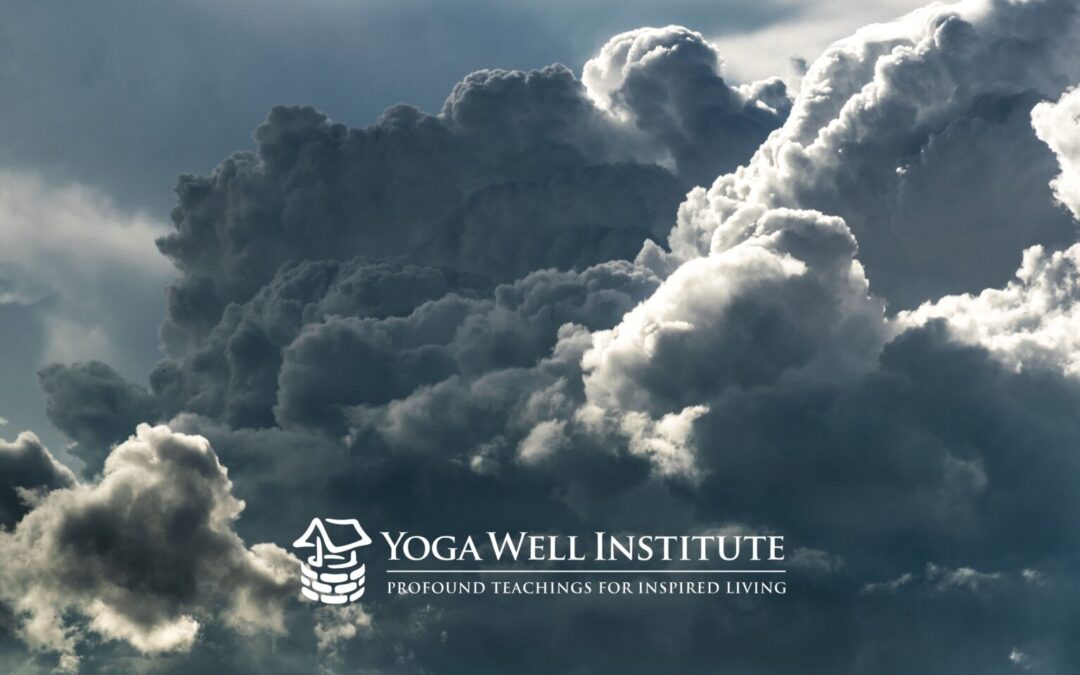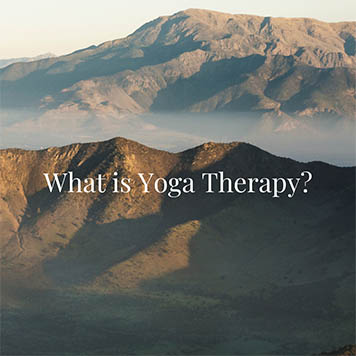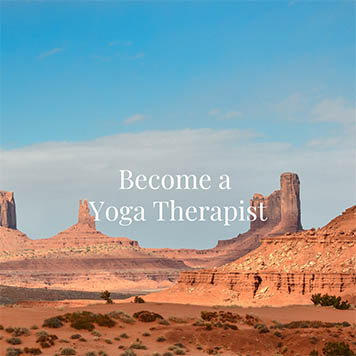Guest blog by Carrie Heeter, PhD, Professor Emeritus, Michigan State University |
Breathing operates in hidden and observable realms of your human system.
Most aspects of respiration are hidden from your conscious mind. Paying attention to the parts of your breath you can observe gives you information about how you are doing. Your breathing reveals how your human system is reacting to events inside your body and in the world around you. Yoga affects hidden and observable aspects of breath.
Your human system optimizes every breath to keep you alive and well.
Your body automatically modifies your breathing from moment to moment to support what you are doing and experiencing.
Air going into and out of your lungs is part of the process of respiration. Your human system monitors your energy use, energy needs, and the acidic levels in your blood. This information is used to determine how to adjust your breathing, heart rate, circulation, and blood pressure—and whether to send more oxygen to your brain or to your skeletal muscles.
Your breathing adapts to support your experiences.
Breath participates in every action and thought.
Your body breathes faster when it senses a threat or an opportunity. Your body breathes slower when you relax and focus.
Your breath constantly responds to changes in emotions. Emotional stress, joy, mental concentration, exercise, and sleep all change how you are breathing.
You breathe faster when you are aroused. Anger and stress come with shallow, ragged breath. You breathe deeper and slower when you are content, happy, or peaceful.
When you exercise, your system breathes faster and deeper and directs more oxygen to your arms and legs. Certain blood vessels constrict and others dilate. When you relax, your system breathes slower and sends more oxygen to your brain and digestive organs.
Here are eight of the observable aspects of breath.
-
Can you feel air moving into and out of your body as you breathe? Where do you feel it?
- Count how many breaths you take in one minute.
- Time how many seconds you spend as you inhale. Time your exhale.
- Notice how fully you inhale and how completely you exhale.
- Are you breathing through your nose or through your mouth?
- Feel the movements in your body as you inhale and as you exhale.
- Can you hear your breath?
- Notice the overall, gestalt feeling of your body breathing.
You don’t have to pay attention to your breathing. But when you do there is so much to see.
Taking time to notice how you are breathing is a great way to check in with how you are doing. Doing this regularly grows your skill at recognizing details of your breathing and interpreting what your breathing pattern reveals about you.
When you place your attention on the sensations of breathing your focus is internal and immediate. You can’t bring your attention to how you were breathing an hour ago or how you will be breathing tomorrow. You can only pay attention to your breath right now. Focusing attention on your breath connects you to your body in the present moment.
Try this:
- Let your breath be free. Bring your attention to your breathing. Don’t try to change your breath. Just observe…
- Bring your attention to your inhale…
- Notice, is your inhale fast or slow right now? Is your inhale deep or shallow?
- Bring your attention to your exhale…
- Notice, is your exhale fast or slow? How completely do you empty your lungs when you exhale?
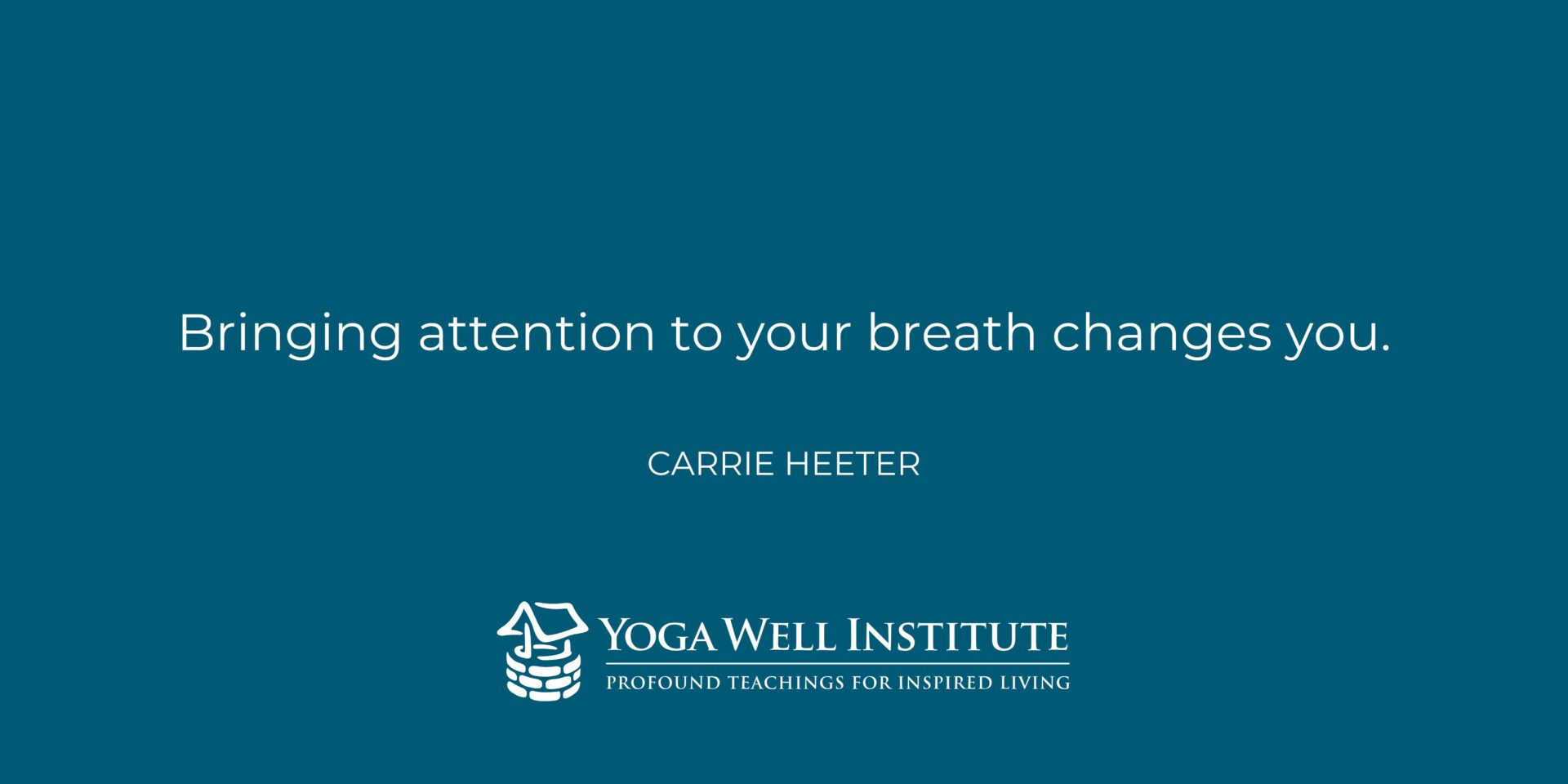
The simple act of paying attention to your breath tends to slow and deepen the breath. Bringing your attention to your breath changes you and changes your breath. Your attention focuses inward. A little bit of space is created that helps separate you from what you were doing or thinking before your focus shifted to your breath. Checking in with your breath throughout the day is a way to check in with yourself. You become more aware of how you are doing. Your self-awareness deepens. You become more you.
Practicing yoga deepens the connection between your mind, body, and breath.
Breath matters in yoga.
During yoga practice you are explicitly guided to align breath with movement. Doing this asks your mind, body, and breath to collaborate. Yoga breathing techniques rely on careful attention to breath. Practicing yoga changes your capacity and your tendency to observe your breath. You are building a bridge of awareness that connects what is hidden and what you can perceive.
Looking for more?
For a deeper exploration of your breath, try the Yoga Well ‘Experience-casts’ on the Yoga Well Podcast! Each practice is a 10-15 minute breath and yoga experience led by Chase Bossart that will guide you to explore your breath. Explore each Experience-cast below!
The Yoga Well Experience-casts:
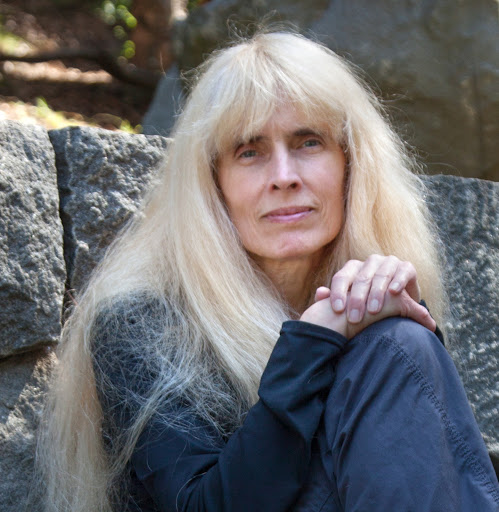
Carrie Heeter, PhD, RYS200
Carrie Heeter, PhD, RYS200, is a meditation designer, research scientist, and author of the book An Inside Look at Meditation: Experiences for healing, support, and transformation. She has studied yoga one-on-one with her mentor Marcel Allbritton and participated in Yoga Well courses and trainings for more than a decade. She is a retired professor of interactive media and serious games at Michigan State University
